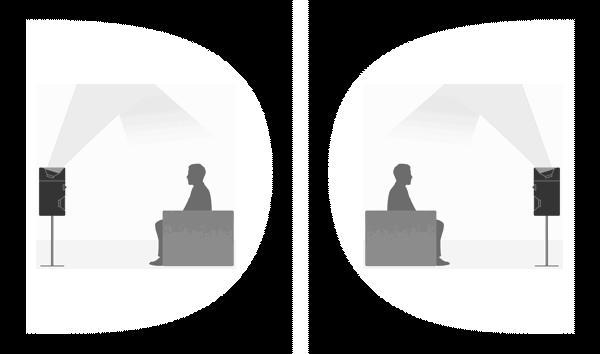Meet the New Dolby Surround

Yes, Dolby Surround. The more knowledgable you are about the history of surround sound, the more confused you might be when you hear the name Dolby Surround in this context. After all, that was the granddaddy of Dolby's home surround formats back in the analog era. When surround sound first arrived in home equipment, Dolby Surround signals were decoded by Dolby Surround (and later, Dolby Pro Logic) receivers and processors.
In this era of lossless digital goodness, why has Dolby brought back Dolby Surround? It hasn't. Only the name is being reborn. The technology in the latest Dolby Surround is actually brand new. Its purpose is to enable Atmos receivers and speaker configurations to serve non-Atmos signals.
So what's the deal on this new Dolby Surround? I'll let Craig Eggers, Dolby's director of home theater, do the heavy lifting:
What is the new Dolby Surround?
Dolby Surround is part of the Dolby Atmos bundle of technologies. It is an upmixer designed to function with traditional channel-based layouts, as well as Atmos enabled layouts that include overhead or Atmos-enabled speakers. It processes native stereo, 5.1, and 7.1 content.
How does it work?
The Dolby Surround upmixer is based on phase and gain relationships of elements in the signal, but importantly employs wideband functionality that analyzes and processes multiple perceptually spaced frequency bands in the signal. The benefit is a finer-grained analysis of the source content prior to steering. The result, we believe, is a more accurate soundstage.
How does it sound?
What was critically important here was for the upmixer to complement (and not compete with) the intent of the artist's original mix. When employed with overhead or Dolby-enabled speakers there is sense of additional spaciousness or what I call "air."
What's the best speaker configuration for Dolby Surround?
It is not limited to a specific speaker count. It can be employed in a 5.1.2 Dolby Atmos system, a 24.1.10 Dolby Atmos system, or any speaker configuration in between.
Dolby Pro Logic and its descendants have side-to-side and front-to-back adjustments. Does Dolby Surround work the same way?
There is a Center Spread control (optional to implement by manufacturer) that is designed to spread the center image into the L and R mains. Like the Center Width control of Pro Logic, it is designed to complement musical content, or can be used by consumers who have a very wide screen display and want to spread the dialogue more evenly across the screen.
Why no front-to-back control?
The new algorithm we employ for Dolby Surround does a better job of extracting and separating elements of the mix—including ambient content—and distributing them evenly throughout the soundstage. Hence there is less need for controls that were inherent to a wideband algorithm.
What is going to happen with the existing Pro Logic family, such as Pro Logic II, IIx, and IIz?
As part of the Dolby Atmos bundle, Dolby Surround is a total replacement of Pro Logic. However, we are still licensing Pro Logic family. You will see it in non Dolby Atmos equipped AVRs. A manufacturer could also choose to include Pro Logic family as a complement to their licensed Dolby Atmos technology bundle, and in fact Onkyo and Yamaha are including it in their Dolby Atmos receivers.
The decision to resurrect the old Dolby Surround moniker seems confusing, at least to people who recall the old analog Dolby Surround. Why this, why now?
Yes, you and I remember the first generation analog—but this is not an extension of that technology! The decision to call it Dolby Surround was based on the fact that we are trying to make our technologies and what they do more understandable. A simple product name works best here, and given that the new format is compatible with a variety of speaker configurations from 5.1 to 24.1.10, it made sense to have a simple and direct nomenclature. We thought Dolby Surround is a name people can associate with and thus it made sense.
How is Dolby Surround being received?
The initial reviews we are getting on Dolby Surround from enthusiasts are overwhelmingly positive. Some go so far as claiming that it is a hidden gem in the Dolby Atmos package!
If you've had a chance to try Dolby Surround in Atmos home equipment, please share your impressions. On-topic comments are always welcome.
Audio Editor Mark Fleischmann is the author of Practical Home Theater: A Guide to Video and Audio Systems, now available in both print and Kindle editions.













































